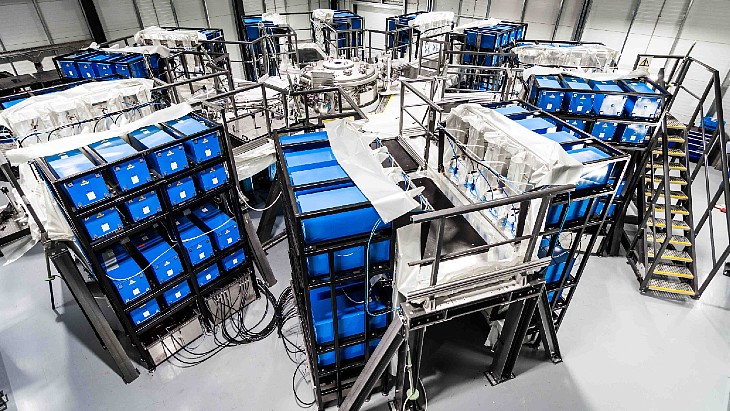Nuclear fusion is the process by which two light nuclei combine to form a single heavier nucleus, releasing a large amount of energy. First Light, based near Oxford in the UK, is pursuing a form of inertial confinement fusion called projectile fusion, which creates the extreme temperatures and pressures required to achieve fusion by compressing a target containing fusion fuel using a projectile travelling at a tremendous speed. This differs from approaches pursued by other mainstream fusion companies in that it does not involve using complex, energy-intensive, expensive lasers, or magnets.
The challenge is to launch a projectile accurately at speeds of several kilometres per second while keeping it in a solid state when it hits the fusion fuel. First Light's Machine 3 has been used, with the longest distance between where the projectile is launched, and the target, being 10mm (known as the "stand-off" distance).
The company has now announced it has increased the stand-off distance tenfold to 10cm using what it calls an "electric gun" design with the projectile "maintained in a solid state over 10cm through careful tailoring of the electric gun foil and projectile thicknesses to the M3 current pulse. The desired thicknesses were determined using simulations of the material strength, which allowed for the projectile design to maintain its strength over a flight distance of 10cm". The company says that in a fusion power plant the stand-off distance will need to be several metres.
First Light Fusion's Mila Fitzgerald said: "This is a milestone moment for First Light and the result of a huge amount of effort, time, and perseverance from the whole team. As we scale up our approach and look to design a pilot power plant based on First Light’s projectile approach, one of the key challenges is being able to fire a projectile at high speeds and from a further distance. That is the basis of our current pilot plant design. This experiment demonstrates a way for us to do that and is an exciting step in the right direction."
Last month the company became the first private fusion company to conduct an experiment on the Sandia National Laboratories 'Z Machine' in New Mexico, USA, setting a new pressure record for quartz. The Z Machine is the most powerful pulsed power facility in the world. With a peak power of 80 trillion watts, it electromagnetically launches projectiles to higher velocities than any other facility in the world. These are used to impact samples of material, testing their properties at extreme pressures.
Nick Hawker, CEO of First Light Fusion, said: "We know the physics of inertial fusion works. Our recent success at Sandia shows that our amplifiers work. To reach commercial, cost-effective, and scalable fusion energy as part of our future energy mix, we need to solve the power plant fundamentals, and in a way that works with the physics. We have taken on the stand-off challenge because it unlocks huge benefits elsewhere. This is a very significant derisking moment. There is further work to do. Now we have a solid projectile, we move on to studying and controlling the accuracy of launch."





_47120.jpg)
_23621.jpg)

_63865.jpg)





